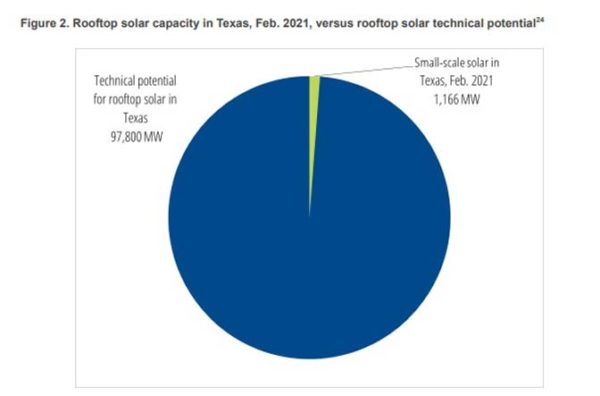One year ago this week, winter storm Uri unleashed a deep freeze over Texas, causing widespread power outages that affected more than 4.5 million people for up to four days. The outages are considered the cause of most of the 200+ deaths as well as storm damage estimated at approximately $195 billion.
What happened in a state that rarely sees below freezing temperatures was that unusually frigid temperatures, coupled with ice and snow, crippled generating units, reduced natural gas production, and froze wind turbines. A preliminary report from the Federal Energy Regulatory Commission (FERC) called on Texas to–again–winterize its energy infrastructure. “This is a wake-up call for all of us. There was a similar inquiry after Texas experienced extreme cold weather in 2011, but those recommendations were not acted on,” said Rich Glick, FERC Chairman.
The final report by FERC and the North American Electric Reliability Corporation said that issues with the natural gas supply caused 87% of the outages as wells and pipelines froze and uninsulated gas plants failed to function. An additional challenge is the unique Texas electrical grid, which stands alone. The grids that supply electricity to most of the country are controlled by FERC, whereas the Texas grid is regulated by Electric Reliability Council of Texas (ERCOT), a non-profit corporation regulated by the Public Utility Commission of Texas and the Texas Legislature. Had Texas been interconnected to grids in other states, it may have been possible to bring power to the storm-stricken areas. According to a Grid Strategies report, an additional 1GW of transmission ties between the ERCOT grid and that governed by FERC in Southeastern US could have saved nearly $1 billion, while keeping the heat on for hundreds of thousands of Texans.
Following the devastation caused by the storm and subsequent analysis, in June of last year Texas Governor Greg Abbott signed Senate Bills 2 and 3 into law. The laws are intended to change how the grid must be prepared for extreme weather and how ERCOT is governed. Senate Bill 3 had had provisions in it that would have required solar assets on the grid to help pay for some of the costs of ancillary services and shoring up the grid, but SEIA helped defeat those provisions.
The Benefit of Solar-plus-storage in TX
In 2020 Texas ranked number two for solar installations in the country, and at the time of the storm a total of 6,349MW of solar capacity was installed on Texas rooftops or in utility-scale installations across the state.
According to a white paper “Rooftop solar and the 2021 Texas power crisis”, recently released by the Environment America Research & Policy Center, Environment Texas Research & Policy Center and Frontier Group, if Texas’s full rooftop solar potential had been tapped, devastation from the February 2021 freeze would have been lessened.

The research estimates that the technical potential for rooftop solar generation in Texas is 97,800MW – more than 15 times the total installed capacity at the time of the 2021 power crisis. The report notes that power production fell short of forecast demand on 13 days last February and it estimates that on 11 of those days, rooftop solar could have supplied more than enough power to meet the daily shortfall gap.
In addition to the need for rooftop solar, Uri pointed out the need for adding storage to the mix. Sean Gallagher, SEIA vice president of state and regulatory said that solar and storage “will be a big part of the solution” in Texas. Vibrant Clean Energy, released a white paper on the storm impacts on the ERCOT electricity grid, and it studied a hypothetical ERCOT grid with a high penetration of renewables. It concludes that the variability of wind and solar would still persist in the future, but the modeling added 40,000MW of storage to the grid, which was found to be enough to cover all of the blackout requirements with room to spare.
This content is protected by copyright and may not be reused. If you want to cooperate with us and would like to reuse some of our content, please contact: editors@pv-magazine.com.









By submitting this form you agree to pv magazine using your data for the purposes of publishing your comment.
Your personal data will only be disclosed or otherwise transmitted to third parties for the purposes of spam filtering or if this is necessary for technical maintenance of the website. Any other transfer to third parties will not take place unless this is justified on the basis of applicable data protection regulations or if pv magazine is legally obliged to do so.
You may revoke this consent at any time with effect for the future, in which case your personal data will be deleted immediately. Otherwise, your data will be deleted if pv magazine has processed your request or the purpose of data storage is fulfilled.
Further information on data privacy can be found in our Data Protection Policy.